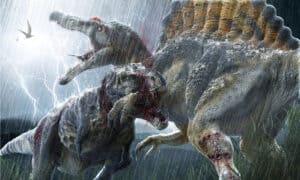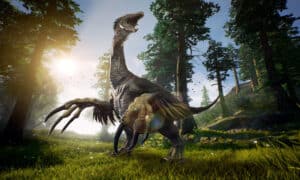Fossils are more than just the fascinating bones of ancient animals. They’re important markers that tell the story of how life was in the distant past in a particular location. Say you want to know more about life in New York back in the Cretaceous, several million years ago; the best way to do so is by studying dinosaurs and other ancient animals that lived in New York at the time.
The State of New York has a relatively rich fossil record. There’s a good record of life in the Paleozoic Era but not enough fossils to reconstruct the events of most of the Mesozoic and Early Cenozoic eras. Read on to discover the most notable dinosaur fossil discoveries in New York over the years.
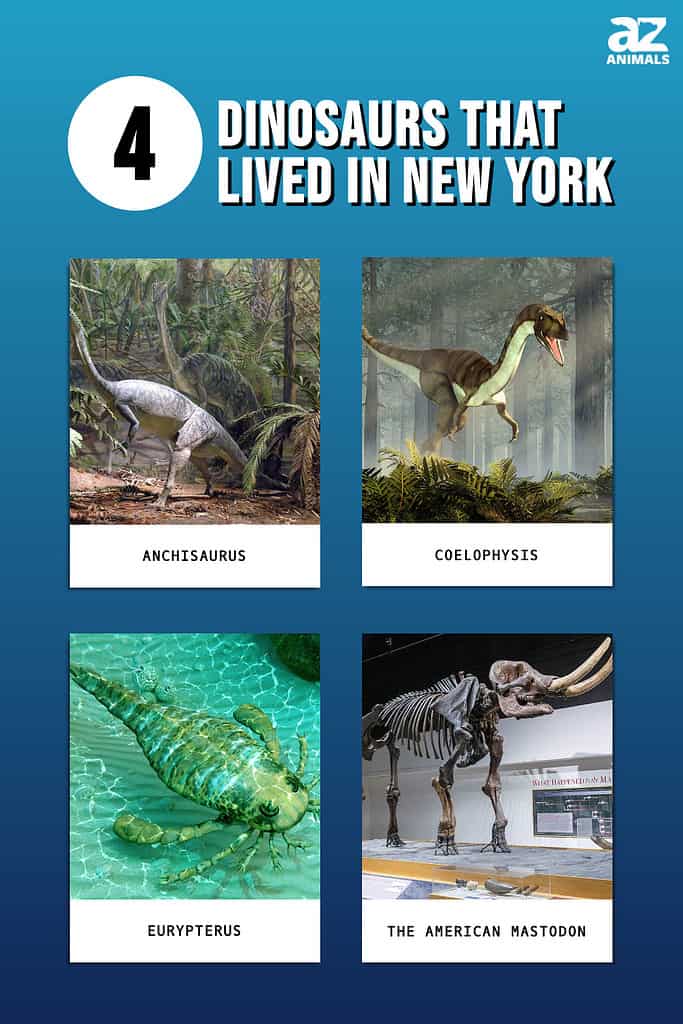
Anchisaurus
Anchisaurus was a relatively small dinosaur that lived in New York during the Jurassic Period about 199 to 189 million years ago. It was only 7-8 feet tall and most likely did not exceed a weight of about 60 pounds. The dinosaur was a terrestrial herbivore and was probably prey for theropod dinosaurs that lived around the same time.
Paleontologists have discovered fossils of this creature in New York and Massachusetts. Four fossils of the Anchisaurus have been found so far. The first fossil was found in a quarry in Connecticut in 1818. The Upper Portland Formation preserved the Anchisaurus remains. At first, the remains were considered to be those of a human till they noticed its peculiar jaw and tail. The quarry workers, not knowing how important the discovery was, had already tampered with most of the bony remains. Luckily, another fossil of the same species was discovered in another part of Connecticut, and this time it was in much better shape.

was a relatively small dinosaur that lived in New York during the Jurassic Period.
©JERRYE AND ROY KLOTZ MD, CC BY-SA 3.0 <https://creativecommons.org/licenses/by-sa/3.0>, via Wikimedia Commons – License
Coelophysis
In studying dinosaurs that lived in New York and other locations, scientists sometimes use other evidence of the creature’s activity, such as footprints, to prove its existence. These are known as trace fossils, and they’re important markers for studying fossils in locations where their preservation is unlikely such as in New York.
A good number of dinosaur foot imprints have been recovered from rocks in New York. A peculiar set was discovered in 1972 on rock slabs in Albany. Scientists can’t tell the exact dinosaur species the footprints belong to. However, there are speculations that the footprints were left behind by a Grallator (a type of carnivorous theropod dinosaur). The suspected dinosaur in the group is the Coelophysis.
Coelophysis was a carnivorous dinosaur that lived some 200 million years ago. This falls within the Late Triassic and Early Jurassic periods. This relatively small dinosaur weighed between 40 and 50 pounds and was roughly 9.8 feet tall. Coelophysis had a slender body and was probably one of the earliest terrestrial dinosaurs. It also had a long snout, neck, and tail. The predatory animal primarily fed on early mammals and smaller reptiles.
Fossils of the creature can be found all over the world, including present-day North America, even though the continent did not exist separately back then. Instead, the continents were part of a single landmass known as Pangea.
The slab containing the dinosaur footprints is presently a property of the New York State Museum. You can visit to catch a glimpse of the Coelophysis footprint there. The Nyack Beach State Park also contains similar fossilized dinosaur footprints that date back to the Mesozoic Era.
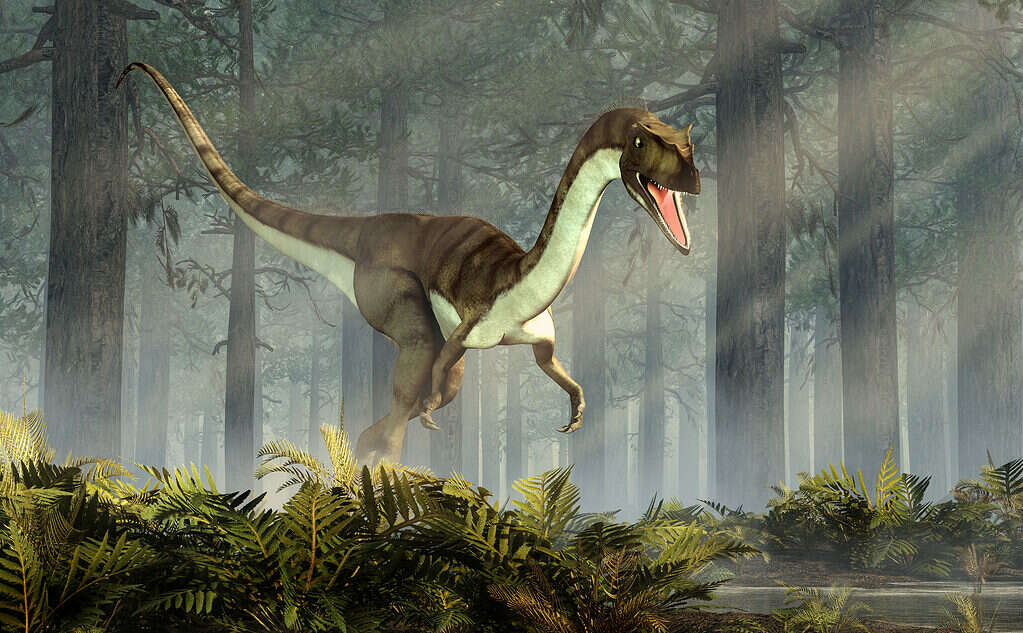
Dinosaur foot imprints have been recovered from rocks in New York which may have been made by
Coelophysis.
©Daniel Eskridge/Shutterstock.com
Eurypterus
The Eurypterus is the official state fossil of New York. So even though it’s not a dinosaur, the ancient creature deserves a spot on this list of ancient animals that lived in New York. The Eurypterus was one of the most fearsome underwater creatures to have lived in its time. It is referred to as the sea scorpion but is only distantly related to modern-day scorpions.
Eurypterids lived during the Silurian Period, which was around 444 to 419 million years ago. The genus went extinct about 250 million years ago as a result of the extinction events that occurred at the end of the Permian. The sea scorpion’s genus is further classified into 15 different species.
This fearsome predator is an arthropod related to modern-day horseshoe crabs, spiders, mites, ticks, and of course, scorpions. Eurypterids have an uncanny resemblance to land scorpions thanks to their long tail (which had no stingers). The animal lived at a time when the majority of North America, including New York, was underwater. Their existence also predates that of many ancient sharks and reptiles. The diet of the Eurypterus would have included primitive invertebrates and fish that existed in the sea at the time.
The largest collection of the Eurypterus fossils is at the Yale Peabody Museum. The museum contains the most diverse collection of the Eurypterus species in large slabs collected from New York. Eurypterids fossils from other locations like Ohio, Indiana, and Ontario are present in this museum as well.

was one of the most fearsome underwater creatures to have lived in its time, referred to as the sea scorpion.
©Aunt Spray/Shutterstock.com
The American Mastodon
One of the megafauna fossils recovered from New York is the American mastodon. The prehistoric animal existed thousands of years ago during the ice age. They belong to the order Proboscidea, the same order as present-day elephants and woolly mammoths.
Scientists believe that the American mastodon shared many similarities with modern elephants. They also had heavy-build tusks and long flexible trunks. Mastodons were herbivores that fed on the vegetation that grew near swamps and other wet areas.
Despite being related to mammoths, they have a few distinctive physical characteristics. For instance, mastodons were generally smaller than mammoths. They also had low-domed heads and straighter tusks.
The estimated dates of the mastodon fossils were relatively close to that of their look-alikes — the woolly mammoths. This signifies that both species most likely coexisted in the same location around the same period.
1705 marks the year of the first official discovery of mastodon fossils at Claverack, NY. The fossil consisted of a large mammalian tooth and other bone fragments. Another significant mastodon fossil discovery was made in 1866. A mill construction was going on when the workers noticed the fossilized remains.
The almost complete fossil was in good condition, and it belonged to an American mastodon estimated to have weighed about five tons. The elephant-like animal had a shoulder height of eight-and-a-half feet and a length of 15 feet. Paleontologists believe it was a 30-year-old male that existed about 13,000 years ago.
The fossil was on display for the public for the first time at the Geological and Agricultural Hall, Albany, in 1867. This fossil would later be known as the Cohoes Mastodon. You can still find it in the New York State Museum.
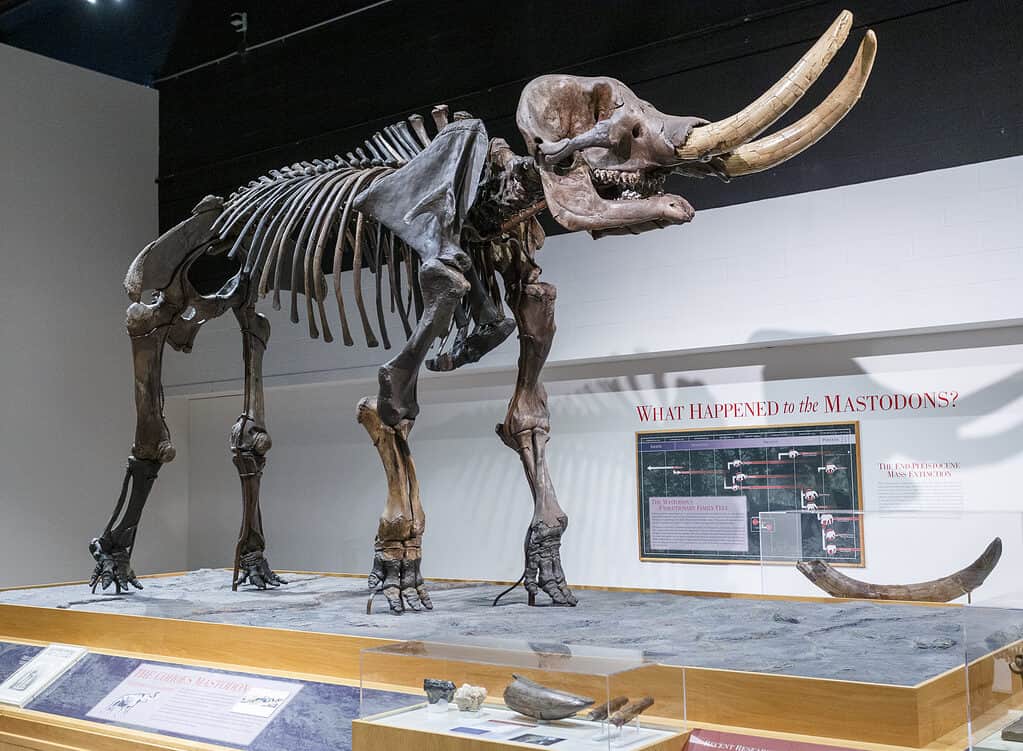
One of the megafauna fossils recovered from New York is the American mastodon which is on display at the New York State Museum.
©Kenneth C. Zirkel, CC BY-SA 4.0 <https://creativecommons.org/licenses/by-sa/4.0>, via Wikimedia Commons – License
Ancient Invertebrates That Lived In New York
Apart from the dinosaurs that lived in New York, the state also has a large number of invertebrate fossils. The marine-dwelling organisms were especially abundant because a shallow sea covered present-day New York in ancient times. Jellyfish, brachiopods, clams, and trilobites dominated the seas in the Late Cambrian.
The Devonian rocks of the state have a rich fossil record as well. You can find remains of early corals, bryozoans, cephalopods, gastropods, and sponges in them. More significantly, the New York Devonian rocks contain the fossils of the first fishes.
Conclusion
Most of the fossils of dinosaurs that lived in New York can be seen at the New York State Museum. The museum holds a wide collection of fossils, including over 17,000 that have been studied already. It also has more than 600,000 fossils that are potentially important for ancient environment reconstruction and future paleoecological works.
Summary Of Dinosaurs That Lived In New York (And Where To See Fossils Today)
| Rank | Dinosaur | Where To See Fossils |
|---|---|---|
| 1 | Anchisaurus | New York State Museum |
| 2 | Coelophysis | New York State Museum |
| 3 | Eurypterus | New York State Museum |
| 4 | The American Mastodon | New York State Museum |
The photo featured at the top of this post is © iStock.com/MR1805
Thank you for reading! Have some feedback for us? Contact the AZ Animals editorial team.



